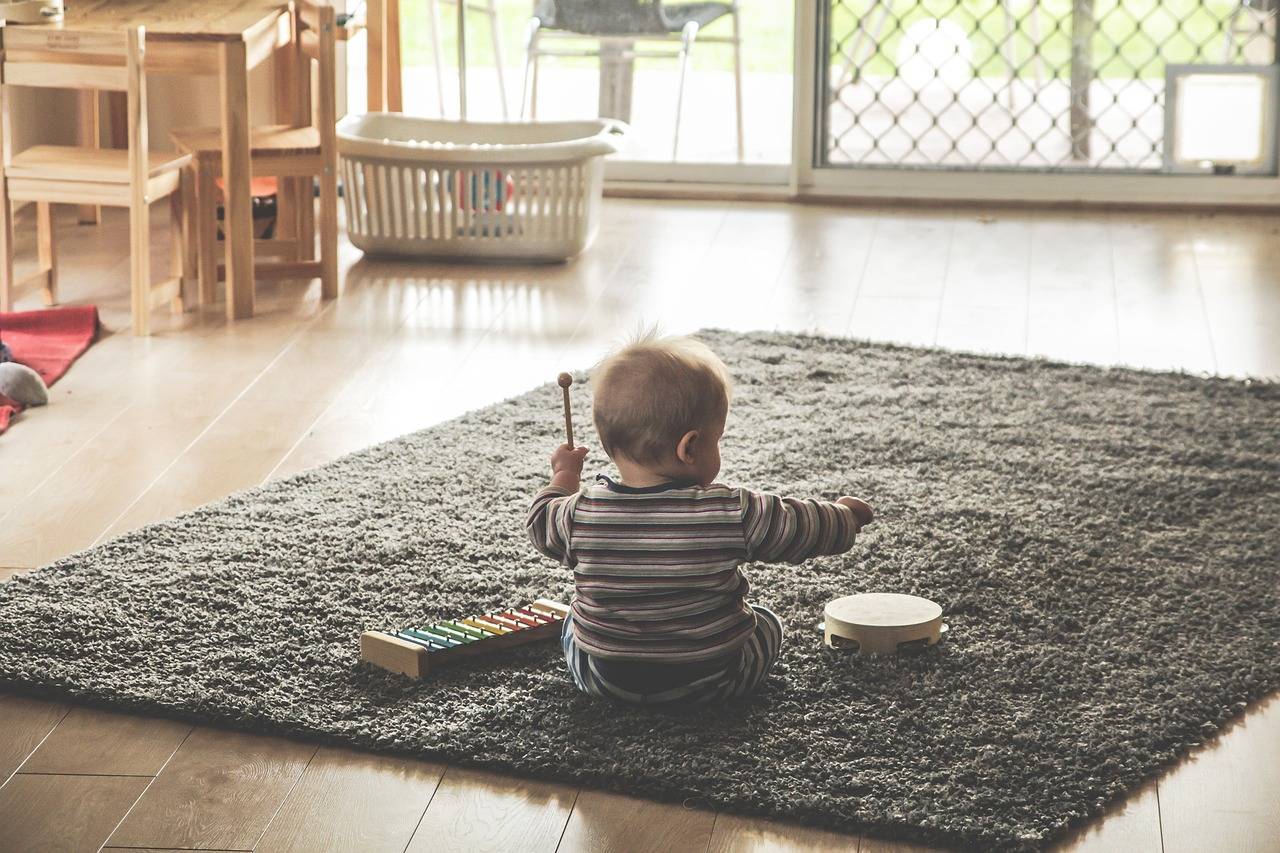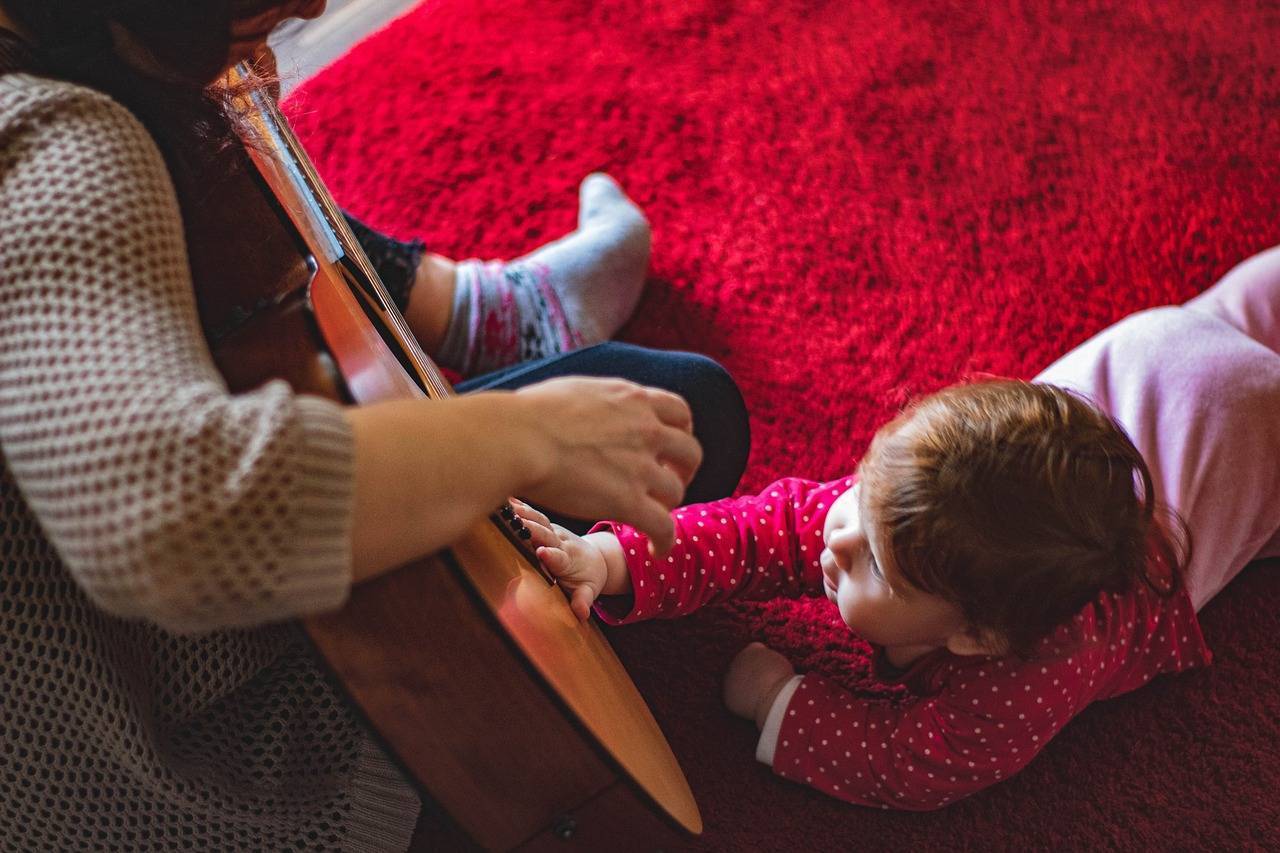5 Ways to Introduce Music to Kids

There is a strong correlation between young children who have formal music training and their academic performance later on. It’s no wonder parents are trying to get into early childhood classes or schools with a musical focus to hone this curiosity. But how do you introduce young children to music in a way that helps them discover their passion and develop a desire to learn more?
Here are five ways to introduce music to kids!
1. Introduce Rhythm
It might begin simply – with the tapping of a spoon on a plate. Children develop some sense of rhythm by the time they reach kindergarten age. But they are actually capable of learning these skills earlier – by the age of three or four. Here’s what you can do to encourage early rhythmic awareness:
- Play games or sing songs with your toddler or child involving clapping, snapping, and stomping.
- Create simple homemade musical instruments together and see if your child can mimic a simple four-beat rhythm you make.
- Repeat simple nursery rhymes or short songs every day
A sense of rhythm can help determine later musical ability. Introduce these skills as early as you can.
2. Toddler Music Classes
Look for children’s music classes in your area. If you are lucky enough to have a music conservatory nearby, this is a great starting point. Here’s what to look for:
- Teachers trained in early childhood education with a musical focus.
- Classes that involve singing, drumming, and exploring instruments
- Smart Start music programs geared toward developing musical cognitive abilities in children ages 0-4.
Having a great music teacher who understands both developmental age and musical ability could be the difference between your child wanting to attend a class or not. Before you sign up, ask to observe the class in action.
3. Play Musical Instruments at Home

Children mimic the adults around them. If you play an instrument already, make sure you do so around your child from an early age. Even if you are an amateur musician, the goal is to spark curiosity in music as soon as you can. Here are some ways you can play music with your child at home:
- Let them hear you play your instrument, and allow them to hold it and play it
- Record a video of them playing music and watch it together
- Play a song they know and have them try to match the rhythm on their own toy instrument.
These actions build your child’s confidence and help them realize that they can create music themselves.
4. Introduce a Variety of Genres
Listening to different types of music may spark further interest in a certain instrument or musical tone. Here are some fun ways to introduce your child to different genres of music in their daily routine:
- Offer a range of music in the background – give your child a simple music box to play with before bedtime or listen to the upbeat tempo of African dance music when it’s time to wake up. Make it fun!
- Help your child create a playlist and listen to it together in the car.
- During dinner time, match your music at home to the style of cuisine. If you are having spaghetti that night, what a great time to introduce your child to Italian opera!
If your child is particularly drawn to one genre, explore it further.
5. Attend Live Performances
From playing with sound to learning how notes work, there’s a certain art to taking that curiosity one step further. Attending a live performance allows your child to see music in action. Start off with these places:
- Find live music in the park where children can freely dance around in open areas and experience the joy of music with other children. Better yet, go with a friend or neighbor who has kids the same age.
- Attend free shows at your local church.
- Find an open-mic night at your local coffee shop and listen to a variety of artists from your community.
Hearing music live is a great starting point, and it anchors children to the music community around them. There are many easily accessible shows if you know where to look.
Let Them Play
Once you’ve introduced a variety of genres and instruments, allow your child to take the lead. When they are old enough to choose an instrument to study or play, let them choose the instrument that speaks to them – they are more apt to stick with an instrument they choose themselves.
You’ll be rewarded as you watch your child learn to read music and flourish – in the meantime, make sure you provide the foundation they need to spark their interest and passion.

